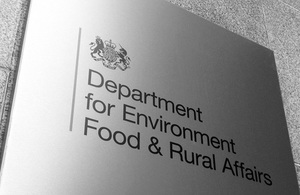The Westminster Commission for Road Air Quality welcomes the news that the European Commission is proposing a comprehensive overhaul of the EU’s road safety and vehicle registration rules.
The new regulations aim to enhance the safety and sustainability of mobility, reflecting the evolving nature of this sector. They will consider the increasing presence of electric vehicles and adapt to emerging technologies.
Enhanced inspections will also be introduced. These include periodic technical inspections for electric vehicles and advanced driver-assistance systems, as well as annual inspections for older cars and vans. They also introduce advanced emission testing methods to identify high-emitting vehicles and reduce fine particle pollution.
The European Commission plans to implement digital vehicle registration and periodic testing certificates, simplify cross-border data sharing, and protect residents from fraudulent activities such as odometer tampering. Additionally, those temporarily residing in another EU country will find periodic technical inspections easier to access.
These proposed changes demonstrate the EU’s commitment to ensuring safe and sustainable mobility while facilitating the free movement of people and goods. It is estimated that between 2026 and 2050, these proposals could save approximately 7,000 lives and prevent around 65,000 serious injuries.
To achieve these goals, the European Commission is proposing revisions to three directives: those concerning periodic technical inspections of vehicles, vehicle registration documents, and the roadside inspection of commercial vehicles.
Challenges of unsafe and ageing vehicles
The proposal targets unsafe vehicles, which contribute to crashes, fatalities and injuries. The current rules, last updated in 2014, must keep up with technological advances such as driver-assistance systems and the growing presence of electric vehicles on the roads. Additionally, highly polluting and noisy vehicles, although relatively few in number, are responsible for a disproportionate share of harmful emissions. The current rules do not sufficiently tackle air pollution and noise.
The ageing vehicle fleet also increases the risk of odometer fraud (ie making vehicles appear to have lower mileage than they do). Combatting this fraud requires updated rules. Outdated procedures and not using modern technology hinder enforcement and cross-border cooperation.
Key elements of the new rules
The proposed measures include the following:
- Periodic technical inspections for electric vehicles and new tests for electronic safety systems, including the testing of software integrity of safety-and-emission-relevant systems.
- Detecting high-emitting vehicles, including tampered ones, using advanced methods for ultrafine particles and NOx.
- Recording odometer readings in national databases for cross-border exchange of odometer history to combat fraud.
- Annual inspections for cars and vans over ten years old.
- Issuing electronic vehicle registration and periodic testing certificates and exchanging data via a common platform to simplify administrative processes.
- Ensuring cross-border recognition of periodic technical inspections taken in another Member State for cars for six months.
- Streamlining access to vehicle technical data for testing centres.
Commissioner for Sustainable Transport and Tourism Apostolos Tzitzikostas said: ‘The EU is firmly committed to cutting road fatalities and serious injuries by 50% by 2030. This initiative marks a major step forward in making our roads safer, our air cleaner, and citizens’ lives easier. By modernising our roadworthiness rules, we are harnessing the latest technology, strengthening enforcement, and ensuring they keep pace with the evolving realities of mobility.’
Ralph Wilce, Chair of Air Monitoring, WCRAQ, commented: ‘This is excellent news for air quality. The NPTI (New Periodic Technical Inspection or MOT) was officially adopted by the EU on April 24, 2025, as part of the new 2014/45 Roadworthiness Directive. Member states are now required to implement this directive into their national laws.
‘Older in-use vehicles will need to undergo an annual check to identify high emitters. Once metrology becomes available, this requirement will be extended from diesel to petrol vehicles as well. The inclusion of the stricter PN-MOT test in the new roadworthiness directive has been a significant achievement.
‘This development will strengthen the efforts of WCRAQ in pressing the UK government to legislate these measures. WCRAQ has played a crucial role in achieving this outcome, and we now urge the UK to adopt these EU standards,’ commented Ralph.
Next steps
The proposals will now be considered by the European Parliament and the Council under the ordinary legislative procedure. Once agreed, the Commission will prepare the required delegated and implementing acts for certain aspects of the implementation of the rules.
Background
In its EU road safety policy framework 2021-2030, the Commission recommitted to its ambitious goal of having close to zero deaths and zero serious injuries on EU roads by 2050 (Vision Zero) and to reducing deaths and serious injuries by 50% by 2030. These proposals will help to achieve these goals and were announced in the Commission’s 2020 Sustainable and Smart Mobility Strategy.
The Commission published the most recent road safety figures in March 2025, showing fatalities are reducing across the EU, but progress remains too slow. The Commission is implementing a Safe System Approach to driving in the EU.
This Safe System requires safe driving, safer vehicles, safer infrastructure, lower speeds and better post-crash care.



